Skin Irritation
Second most frequent work-related injury complaint by orchard harvesters. Exposure to Natural Irritants – 11% of occupational health visits.
“Natural Irritants” includes:
- Dust
- Sun
- Pollen
- Water
- Plants (i.e. peach fuzz, poison ivy, etc.)
These skin irritations presented as:
- Hives
- Eczema
- Dermatitis
- Burns
90% of Occupational Dermatitis is Contact Dermatitis
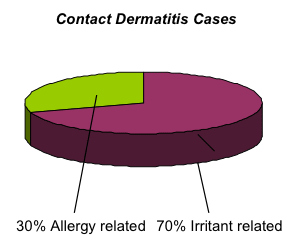 Contact Dermatitis Cases
Contact Dermatitis Cases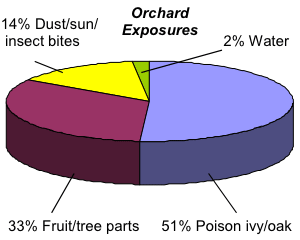 Orchard Exposures
Orchard ExposuresFactors Contributing to Orchard Skin Irritations

(from Northeast Center, 2003, unpublished)
Poison Ivy
Skin Irritation – Second most frequent work-related injury complaint by orchard harvesters. 31% of skin irritation experienced by orchard workers was connected with poison ivy exposure according to the NEC Multi-State Study.
Poison Ivy Safety
Keep poison ivy off your skin.
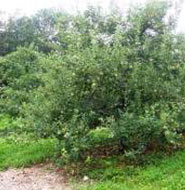
Know what poison ivy
looks like:
- Has 3 leaves on the stem
- Leaves may be red or green
- Sometimes has ivory berries on the stem
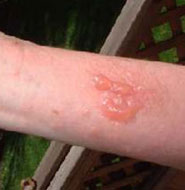
Before work:
- Wear long sleeve shirt and long pants
- Wear gloves
- Apply prevention lotion to skin that can’t be covered

After work:
- Wash work clothes separately from others
- Clean boots, gloves and tools to remove poison oil
- Wash exposed skin with soap and water
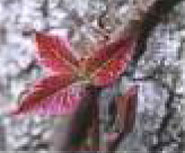 Spring
Spring Summer
Summer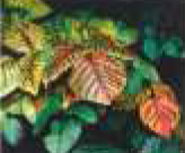 Fall
FallPoison Ivy is frequently found in orchards for several reasons:
- Fruit trees provide the perfect structure for poison ivy to attach and climb.
- It prefers shade and undisturbed soils, conditions which are perfectly accommodated by orchard floors.
- Growers often spray herbicides beneath trees to keep undergrowth closely cropped. Poison ivy is immune to many of these chemicals, so competition from other plants is eliminated and poison ivy can spread freely.
Poison Ivy Posters are available in English, Spanish and Haitian-Creole from NYCAMH/NEC. Call 1-800-343-7527 for more information.